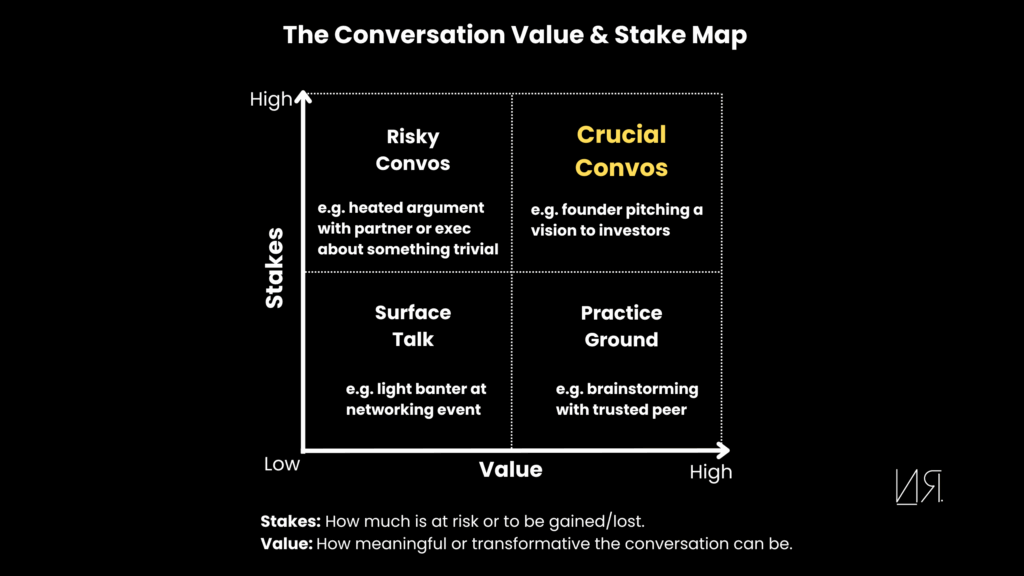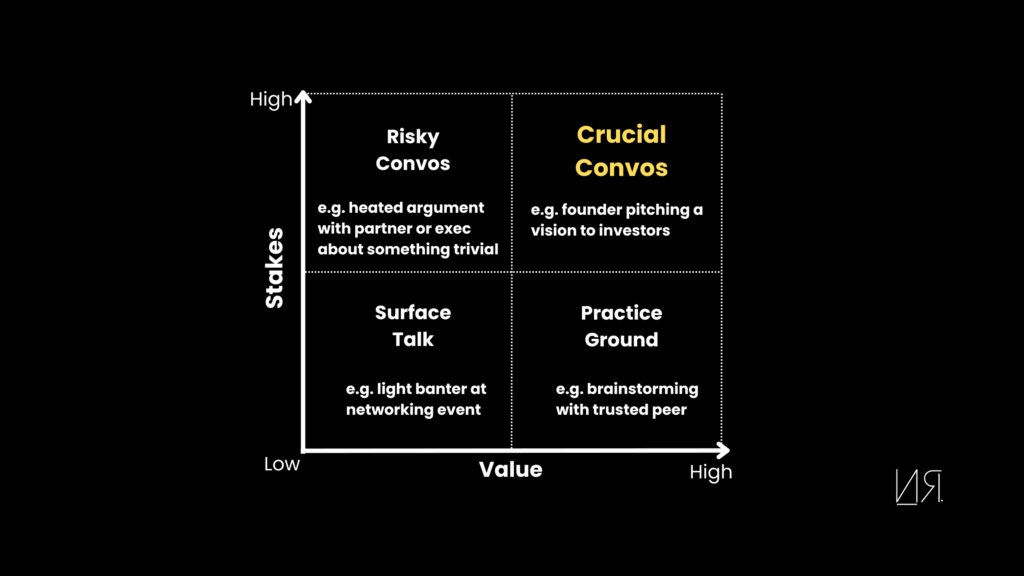I was in the midst of a career transition last year.
Speaking to a few mentors and friends, I gained some clarity as I decided where I wanted to work and with whom. It all seemed clear to me. Between my technical, go-to-market, and strategic communication skills. I knew I could bring value to founders in the early stages of growing their business.
Almost a year later, after working with a few founders, I’m learning something else. It’s not just about the founder and what they do, it’s about the founder’s values and how they do what they do.
Unfortunately, LinkedIn does not display these value-driven traits on bios and about sections.
A year later, I have more clarity: a reminder that this whole journey of developing, packaging, and sharing your expertise to create career and business opportunities is an iterative process.
The Outcome-Focus:
We are all very outcome-driven.
We’ve been trained in schools and jobs to value immediate gratification. Grade reports, mid-year reviews, pats on the back and “job well-done” from parents, teachers, and bosses.
You can’t deny it. You love getting the cheese at the end of the trap.
That’s how you end up on the ferris wheel, running, achieving, sprinting, fuming, grasping as the prize dissolves in your hand like the illusion it was to start with. The reality is that the process of striving for a goal is more important than the goal itself.
You have to practice the joy of the process, otherwise everything becomes transactional. The current moment will always be a means to an end. This includes the practice of sharing your valuable expertise, building trust, and attracting high-value conversations that create opportunities.
I hear the naysayers coming with their digital pitch forks, ready to cancel me like Sydney Sweeney and her great jeans, yelling: “Another bro with his solopreneur platitudes. Isn’t the outcome how you stay motivated?”
The outcome is different for everyone, and it changes.
For instance, the reason a founder wants to build trust is to grow her business. However, her goal at the moment is to use trust to get customers to iterate on their product, not necessarily to grow revenue. Once that is achieved, then the goal changes again.
So yes the goal is important, but constantly evolving.
What I’m talking about is a way of living that allows you to stay anchored in the moment while the goal and the world around you is in flux.
Focus on what you can control.
You can’t control the outcome. You can set up the environment for the outcome but nothing is guaranteed. The only thing that’s guaranteed is how you show up to each moment.
A lot of us seek purpose in work, but how you show up to the moment is your purpose.
HOW you do it is the WHY.
The practice of packaging and sharing your expertise to attract high-value conversations and create more opportunities:
I’ve been reading the book, Chaos Theory by James Gleick.
One concept in the first chapter of the book really struck me – the sensitive dependence on initial conditions, also known as the butterfly effect. This means that even tiny differences in the starting state of a deterministic system can lead to drastically different outcomes over time. In simpler terms, a small change at the beginning can cascade into a large change later on.
No matter how much you practice like Micheal Jordan and set up the same routines or set your business up like Gary Vaynerchuk, you will never have similar outcomes as Michael Jordan or Gary Vaynerchuk.
You will have your unique outcome.
Maybe better, maybe worse.
It all depends on how you look at it.
This applies to anything you do in life. You can learn a system perfectly about how to start a business, package your expertise, or write a book, and follow it to the last detail but you will end up with different results.
That’s why it’s important to make whatever you do a practice.
Trust the process. You will have a different outcome but trend in the right direction. You will develop a joy of doing the work that’s just there.
Here are a few things to keep in mind as you practice the art of attracting high-value opportunities with your expertise.
1. From single customer to buying committee
Over the last 7 letters, I shared a step-by-step process to package expertise and attract opportunities.
Most of what I shared was a simple case involving you, selling to a single buyer (one decision-maker).
Things get complex when the sales include multiple stakeholders, particularly when you are selling in B2B (to another business). There is the internal champion, technical lead, business manager, decision-maker, economic buyer. You have to build trust with all of them – through conversations, supporting documentation, pitch decks, onboarding material.
The approach is still the same. The assets you have to create to reach each person in the buying committee is different.
That’s why the sales cycle in the B2B process takes months, sometimes a year.
Pace yourself.
Understand the decision making process and the sales lead cycle.
2. The High-Value Convo Northstar
I remember sitting in the intercontinental hotel lobby with one of my first clients.
After days of long meetings and negotiations with possible partners, we had a victory drink. Excited, I said: “It’s been a successful trip. Seems the partners are on board, ready to sign.”
His brief laughter was filled with over 30 years of experience, and with his German accent, he responded: “Nifemi, there’s no deal until the money is transferred into our bank account. We can sign all these papers, but it really means nothing until we get payment.”
When you are running a business, the north star is “money deposited into your account.”
Cash collected.
Cash is king.
I used to have all these different metrics for measuring the performance of my business, until I focused on the main thing: “Is money being deposited into my bank account for value created and delivered?”.
That’s it.
If you’re packaging your expertise to find new job opportunities, are you getting job offers?
Keep your goal very simple.
In the practice of having high-value conversations, the second closest thing as a point of measurement is the number of high-value conversations you’re having. Trust the process, knowing that if you have significant high-value conversations, opportunities will emerge.
Every week, ask yourself, “how many intentional high-value conversations are I having?”
That’s your Northstar.
3. Make the Choice
Motivation is a choice.
This is something I learned last year as I studied the psychology of entrepreneurs, writers, and athletes.
There are 3 Cs in motivation.
- Competence: Can I do it?
- Consequence: Will it work?
- Choice: Is it worthwhile?
Let’s look at each C.
Competence “Can you do it?”
Anyone can do anything if they decide to be a student of the game and prioritize learning.
Consequence “Will it work?”
If you’re clear about a simple goal, as long as you understand the value of compounding growth, and you are using each iteration of learning to drive towards your goal. It will eventually work. It’s all a matter of time.
Competence and consequence both just require patience.
The last C is usually the hardest for all of us.
Choice “Is it worthwhile?”
Every day, as you show up to do the work, is it worth your time? That’s the question everyone grapples with in this era of endless choices. It’s up to you to choose whether you want to continuously create opportunities for yourself, your family, and community.
The people that have agency stay motivated. Why? They make the choice.
Yes, you can too.
4. Build Your Practice
I was catching up with a friend, who also happens to be a coach. I told him how, even though I had written 4 books, I still struggle with calling myself as an author.
He said: “Hmm. I wonder why. Have you ever just tried it? When people ask, what do you do? How about just answering, I’m an author.”
I responded: “Yeah, but I’m not just an author, I resonate more with engineer for instance or even entrepreneur. But yeah I write, I make music, I build businesses. I guess I do a whole bunch of things.”
He pushed back: “Yeah, but if you meet someone on the plane and you most likely wouldn’t see them again, why not. It’s such a low-stake conversation. Just tell them one part of you. You don’t have to tell your life story. Say, I’m an author. Try it. See how it feels.”
That’s when it dawned on me. I was treating every conversation the same.
I’ve been so focused on mastering my elevator pitch, freezing up at happy hours when I’m asked what I do, seeing every opportunity as a time to practice my clearly-defined unique value proposition. It had me all wound up.
Not every moment is a high-stake, high-value Conversation.
So I created this conversation value & stake map as a reminder.

Understand where you are on the map, and learn how to flex between high to low stakes and value conversations.
This whole approach is a practice:
Practice:
- clarifying your positioning.
- having discovery conversations.
- creating conversation magnets
- having “low stake” conversations to discover yourself.
- setting up systems to sustain your practice.
- doing business.
- overcoming and letting go of your ego.
- building your confidence.
- finding meaning in what you do by how you do it.
- knowing the type of conversation you’re having.
- showing up.
It’s a choice to practice patience.
The HOW is the WHY.
I hope you start practicing today.
Yours truly,
Nifemi



